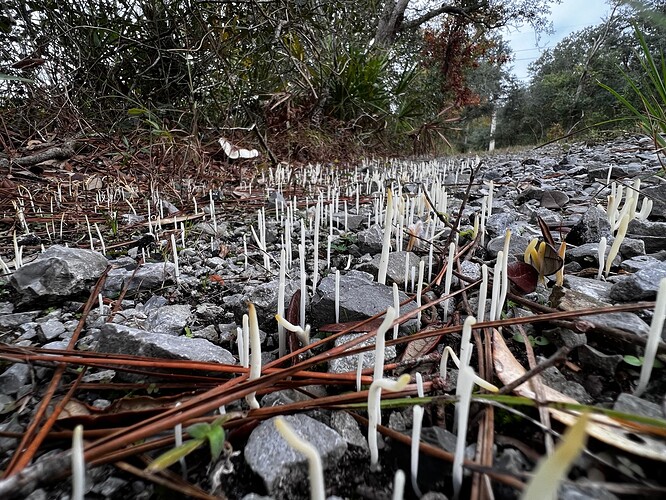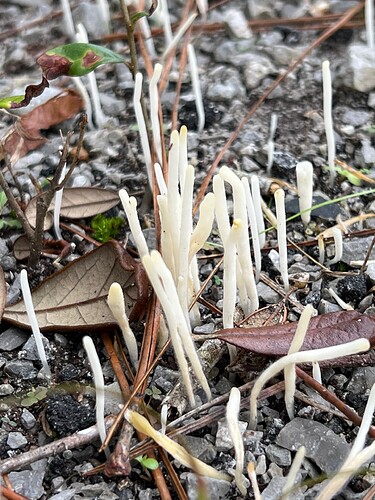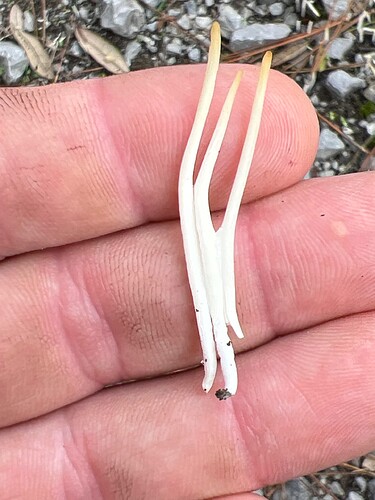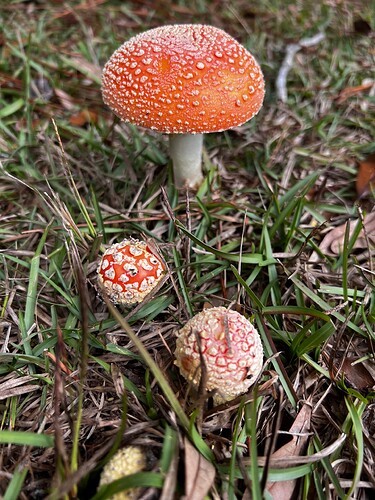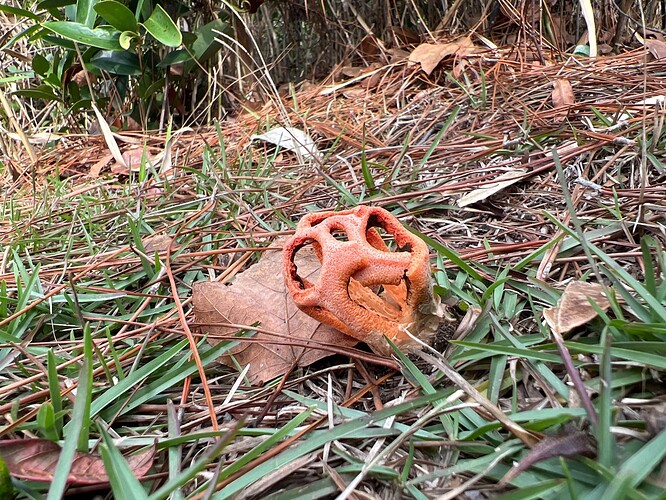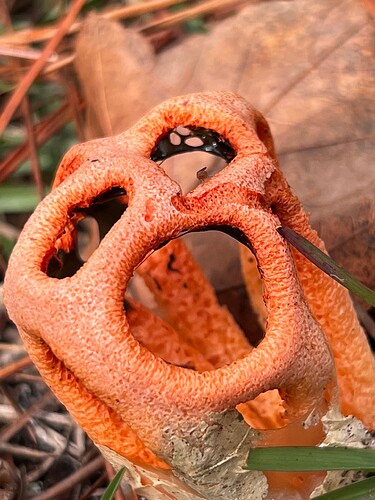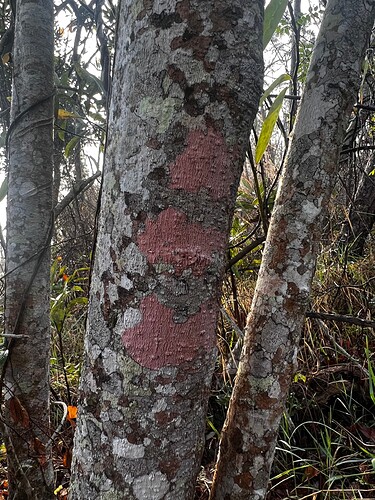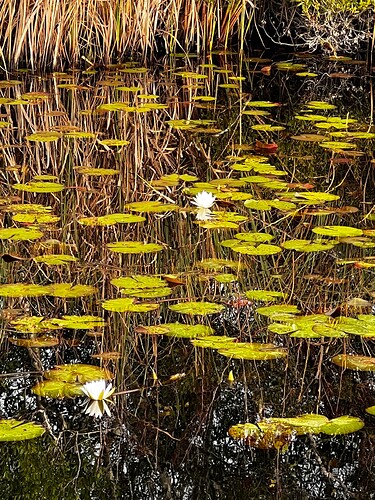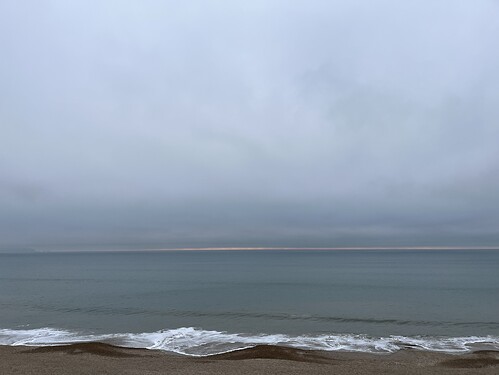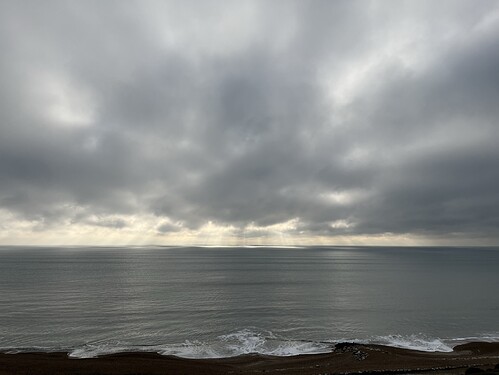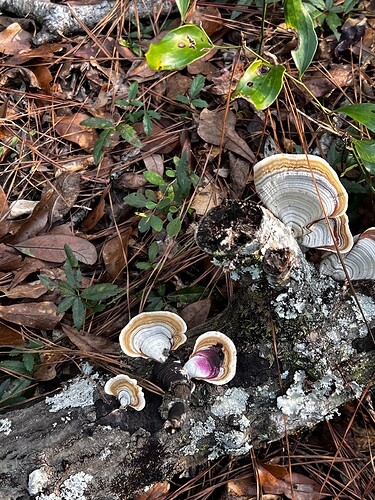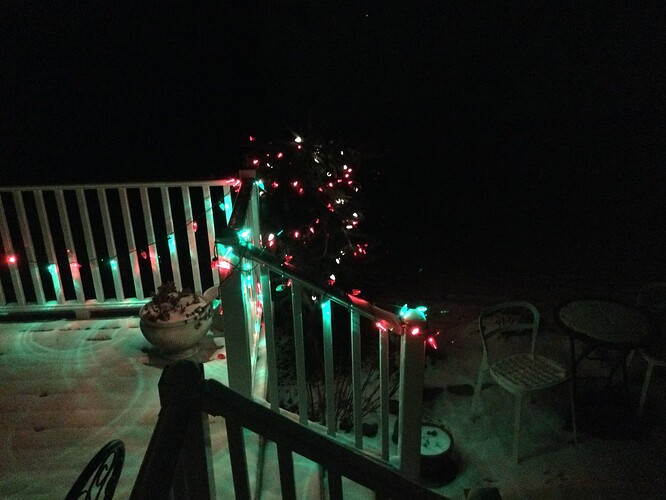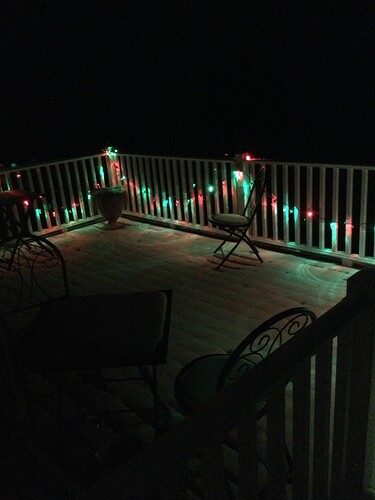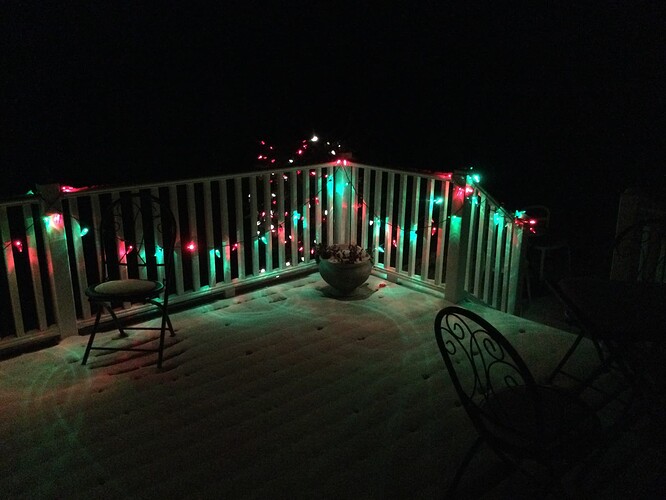So colorful. Any of them deadly? Especially that purple one …
The purple one most likely will kill you. Out of all the purple mushroom species like that in Alabama, several are very toxic. Deadly toxic. I don’t think their toxins are water soluble. Only cure is an organ transplant. If you do a spore print and it’s pure white it’s safe but they seemed to have been brown. However, I don’t know this species enough to try to eat them.
The white one at the end is another potential deadly one. The only one I actually know is the amanita that’s orangish yellow. If cooked wrong it can potentially kill you as well.
I was just sharing for the sake of the wide range of colors that often goes unnoticed.
I’m glad to hear you say that some are deadly, rather than, “I’ll try a bit and see if it doesn’t make me sick.”  or
or 
The colors ARE gorgeous, though. Best to treat as textiles dyed with early arsenic-based synthetic colors: beautiful items to be carefully sealed and enjoyed visually.
Well many I do still try but I try them when I know the genus. Such as there are no deadly bolets in USA. Sole boletes may not change color, no bitter taste and yet you can still get sick or to, or simply have an individualized allergic reaction to it.
Just some more mushrooms to show off the various styles out there.
Amanita species. Most likely a. muscaria but could also be a. persicina.
Geastrales order.
Stinkhorn. Possibly Clathrus columnatus.
A pretty pink peach colored lichen along with many other lichens on a sweet bay magnolia. Beautiful colors.
![image|375x500]
Wanted to create a sort of confusing image. Thought it looked a bit chaotic but beautiful.
(upload://xBk8sWbtHfYROtWLSgrq1nl9DhJ.jpeg)
These last two posts make it clear that “animal, mineral or vegetable?” Doesn’t come close to exhausting the possibilities.
Great pic. The reflections make it look like the lily pad like plants are on stalks.
That’s what caught my attention when I was walking by as well.
Currently on annual leave for the holidays so decided to go exploring now that we live much closer to the beach. We’re experiencing an unusually cold snap at the moment so the paths everywhere were super icy.
If you look really carefully you might be able to see the Isle of Wight needles peeping through the clouds.
Morning sunlight looking ominous on the horizon.
Afternoon god light
Highcliffe Castle from across the lawn
Creepy abandoned building. Would love to look inside, but alas, a fence and razor wire prevents it
@Kendel did you get a snow last night as well? I have heard it is heavier out West…but this was plenty to challenge me with shoveling our driveway out today!
Beautiful though
We got a little bit. Just enough to cover things. It looks like you got more. What a beautiful photo. Thanks, @randy!
A lot of the pictures I post are from these areas. A lot do the ones I don’t post also. I have about 40,000 photos on my phone of hundreds of species of plants and hundreds more species of animals. The video is by Ben Raines. Its focus is carnivorous plants and it just happens to largely take place in my hiking grounds.
He’s the same guy who told me how to get down the large , basket ball size lions mane mushrooms up high in trees above the delta by tying a rock around a pencil thick long rope and throwing it over the limb and then using both ends to slide and saw it over the limb and through the mushroom so it is cut free from the tree and falls into the water and is able to be collected.
It’s not spectacular but it’s a little story and it’s one of my favorite things to look for. Meaningless stories xd.
A small greenbrier with dark purple berries just happened to be growing over a log with some shelf mushrooms and fell off into it and slowly decayed and dyed the mushroom a bit.
The mushroom also gives you a bit of an optical illusion. In the first one you can tell it’s at the top and the juice leaked down. But in the last pic, it makes it look like the juice was absorbed upwards. But it was not.
Wrapping up for the night here, and I thought the back porch looked really pretty with the Christmas lights after dark and with some snow.
I never did get the summer tables and chairs put away. It’s a bit chilly out now to enjoy a eating al fesco, though.
The weather for tomorrow’s (Pilot Mountain) birdcount should be interesting. The temperature is continuously (from 5 am to midnight) dropping from ~5 C down to ~-10 C. With 9 m/s winds and 18 m/s gusts. The wind chill is close to -18 C.
Maybe it will be the same principle as I’ve heard in Africa (we didn’t have a lot of animals where I lived, but in East Africa, I heard that in the dry season you see animals where the water holes are)–in the cold, can you see more birds at sheltered areas with seeds they can scratch up, depending on the species? Thanks
Yes. things would tend to be found in more sheltered areas, like at the bottoms of valleys in wooded areas.
These pictures would go along with that:
Some birds also change their behavior in winter and switch from solitary/territorial to more flocking behavior. I know American robins do this and (I think to a lesser extent) blue jays.
@Paraleptopecten . Wow! you are counting birds in balmy weather (wink). I’ve done several memorable Christmas counts in Saskatoon, Saskatchewan at -43 C. (that’s without the wind factored in…). Binocs don’t work when its that cold and one can scarcely see between the ice crystals on the eyelashes. Yes, we birders are a hardy bunch. At those temperatures, even chickadees don’t venture out to feed much because it is a net energy loss for them. They just sit and huddle and wait for a warm break to exploit their food caches.
Have fun on the count!
Icterids (new world blackbirds) are often in larger flocks in winter than in summer as well (hundreds instead of a dozen to a few dozen). So are sparrows.
